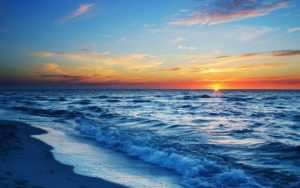Vasilenko Oksana Pavlovna
primary-schooler
MAOU SOSH No. 1
them. Hero of the Soviet Union I.V.Korolkova
d. Salekhard YaNAO
primary-schooler
MAOU SOSH No. 1
them. Hero of the Soviet Union I.V.Korolkova
d. Salekhard YaNAO
Dedicated to World Aviation and Space Day
(April 12)

- The closest celestial body to us. (Moon)
- A device for observing celestial bodies. (Telescope)
- A body falling to Earth from interplanetary space. (Meteorite)
- The word that Yuri Gagarin said before the start. (Let's go)
- The aircraft is heavier than air, designed to fly in the atmosphere. (Airplane)
- What was the name of the spacecraft on which Gagarin flew? (East)
- A given direction for a rocket or aircraft. (Course)
- What is the name of the Earth's gas shell? (Atmosphere)
- What is the name of a person who tests and operates space technology in space flight? (Astronaut)
- What event is dedicated to the celebration of the World Aviation and Space Day? (12 April 1961)
- What is the name of the accumulation of water vapor in the atmosphere? (Cloud)
- Name the world of stars and galaxies in one word. (Universe, space)
- Starry sky blueprint. (Map)
- Time of the Earth's complete revolution around the Sun. (Year)
- Does the temperature rise or fall with altitude? (Reduced by 6 degrees per kilometer)
- The first female astronaut. (Valentina Tereshkova)
- An animal used to study spaceflight conditions. (Rabbit)
- Name the names of dogs that have been in space and returned safely to Earth. (Squirrel and Arrow)
- The central body of the solar system, spherical and hot, consists of gases, the main source of energy on Earth. (Sunshine) Its surface temperature reaches 6000 g.
- It is the only planet in our system where life exists. (Earth)
- How many planets are in the solar system? (9)
- The closest planet to the Sun is slightly larger than our Moon. (Mercury) The temperature on the surface of this planet during the day +430, and at night - 170
- This planet is sometimes called the red planet, because most of its surface is red-orange. (Mars)
- Around this planet there are huge rings of pieces of rock, ice, dust. (Saturn)
- The most distant planet from the Sun. (Pluto)
- The largest planet in the solar system. (Jupiter)
- Which planet has the longest orbit around the Sun? (Pluto has 247 Earth years)
- Which planet has the highest temperature? (On Venus, +480 degrees)
- What is the name of the phenomenon in which the Earth falls into the shadow cast by the Moon? (Solar Eclipse)
- What is the name of the costume that protects the astronaut’s body? (suit)
- What is the name of a celestial body that revolves around another? (Satellite) The Earth has one natural satellite, the Moon, and many man-made satellites. Today, there are about 300 satellites in Earth orbit. The first satellite was launched in 1957 in the USSR.
- Which astronauts were the first and the only ones on the surface of the moon? (US astronauts in 1969)
- Complex of structures and technical means for assembly, preparation and launch of spacecraft. (Cosmodrome)
- A person who observes the starry sky, photographs it, studies the life of stars and planets. (Astronomer)
- Is it possible to navigate the lunar surface using a compass? (The moon does not have a magnetic field.)
- How long will a match burn on the moon? (Only the head of the match, which contains oxygen, will flash.)
- Is it possible to navigate the surface of the planet Venus by the Sun and stars? (Not because the sky of Venus is covered with a thick layer of opaque clouds)
- An astronaut in zero gravity must exercise. Can dumbbells be useful for this? (Dadgers in zero gravity use inappropriate, because they lose weight, their weight will be small)
- What is the difference between a meteor and a meteor? (Meteor is an atmospheric phenomenon, the combustion of cosmic particles during an invasion of the Earth's atmosphere, which produces a glow.) Meteorites are celestial bodies falling to Earth from interplanetary space.
- In ancient times and in the Middle Ages, their appearance in people caused anxiety and fear. It was believed that they were harbingers of wars, epidemics, other terrible events, because these objects appeared suddenly and were with a tail. What is it? (Comets)
- How much does a 70-kilogram man weigh on the moon? (About 12 kg: the gravitational force on the moon is 6 times less than on Earth)
- Imagine that you are on the moon and have something to say to each other. How can you do that? (With gestures and radio. On Earth, sound is transmitted through the air, but there is no air on the moon. Therefore, the moon is always completely silent: no matter how much you scream, no one will hear.
- What is the length of day and night on the moon? (Day and night are 2 weeks long)
- What is a light year? (The distance that a light beam travels in 365 Earth days)
- Controlled aircraft with an engine, lighter than air (airship)
- What is the maximum height of a rocket or aircraft? (Ceiling)
- What is the name of the closed curve along which one body moves around another? (Orbita)
- Who was the first living creature to fly around the moon on September 21, 1968? (Turtle)
- Astronauts on Mars view the starry sky. Will the pattern of constellations familiar to the astronaut from observations from Earth change? What else can he see? (The constellation pattern is virtually unchanged, as the distance between Earth and Mars is negligible compared to the distance to the stars.) And the astronaut will see the Earth.
{module Yandex}





